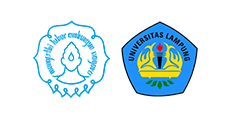Gamified Flip Instruction to Improve Student Learning Outcome in Classroom
Abstract
Students' concept mastery skills in Simulation and Digital Communication lessons are still low. To solve the problem, an effective and efficient form of learning is needed, among others by choosing strategies and learning models that suit the abilities and needs of students and can create a fun learning atmosphere. The purpose of this study is to find out: 1) improvement of student learning outcomes in the application of gamified flip instruction type cooperative learning model, 2) effectiveness of student learning on the application of gamified flip instruction type cooperative learning model with expository learning. 1) There are differences in student learning outcomes using lecture learning methods in simulation and digital communication lessons and a signification of 0.81 (sig>0.05). Thitung value of 2,791 and ttabel of 1.66724 so that thitung obtained greater than ttabel (thitung > ttabel), 2) Improvement of learning outcomes using gamified flip instruction learning method is more significant than using expository learning methods. This is evidenced by the results of the gin test which showed that the increase in the experimental class was higher compared to the control class. Gain test results in the experiment class scored 44.4 while the control class scored 24.5. The experiment class falls into the medium category and the control is in a low category.
Full Text:
PDFReferences
Al-Tabany, Trianto Ibnu Badar. (2014). Mendesain Model Pembelajaran Inovatif, Progresif dan Kontekstual. Jakarta: Prenadamedia Group.
Fitriana, N.A dan Sumardi. (2016). Eksperimen Pembelajaran Dengan Pendekatan Open-Ended dan Contextual Teaching And Learning (CTL) Terhadap Prestasi Belajar Matematika Ditinjau Dari Motivasi Siswa. Seminar Nasional Pendidikan Matematika.
Kusnandar Putra. (2017). Flipped Classroom: ‘Merenovasi’ Model Pembelajaran Tradisional. Kompasiana. http://m.kompasiana.com/amp/kusnandar/flipped-classroom-merenovasi-model-pembelajaran-tradisional//2017.
Muhammad Takdir, (2017). Kepomath Go “Penerapan Konsep Gamifikasi Dalam Pembelajaran Matematika Dalam Meningkatkan Motivasi Belajar Matematika Siswa”. Jurnal Penelitian Pendidikan INSANI, Volume 20, Nomor 1, Juni 2017, hlm. 1-6.
Natalie B. Milman. (2012). The Flipped Classroom Strategy: What Is it and How Can it Best be Used?. Distance learning 9 (3), 85.
Prambayun, A., Farozi, M. (2015). Pola Perancangan Gamifikasi Untuk Membangun Engagement Siswa Dalam Belajar. Semanasteknomedia.
Sugin, W.A, Priatnoko, S, dan Bason. (2020). Flipped Classroom Learning Design Using the ASSURE Model. Jurnal Teknodika. Volume 18, No. 02, September 2020. e-ISSN: 2656-6621. http://jurnal.uns.ac.id/Teknodika.
Refbacks
- There are currently no refbacks.






